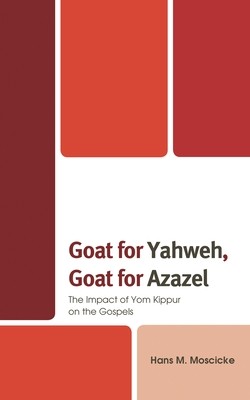
- We will send in 10–14 business days.
- Author: Hans M Moscicke
- Publisher: FORTRESS ACADEMIC
- ISBN-10: 1978712421
- ISBN-13: 9781978712423
- Format: 15.2 x 22.9 x 1.4 cm, kieti viršeliai
- Language: English
- SAVE -10% with code: EXTRA
Reviews
Description
This book explores the influence of the Day of Atonement on the Gospels. In the first chapter, Hans M. Moscicke studies the effect of Yom Kippur traditions on Matthew's Final Judgment episode (Matt 25:31-46), arguing that the evangelist portrays the expulsion of the unrighteous as a purgative event resembling the yearly expulsion of iniquity from the temple by means of the scapegoat. In Chapter Two, he contends that Matthew constructs a goat-for-Yahweh typology in his baptism scene (Matt 3:16-17) and a goat-for-Azazel typology in his temptation narrative (Matt 4:1-11). He argues in the third chapter that Luke's narrative regarding Jesus's visit to Nazareth (Luke 4:16-30) has been shaped by Jubilee and Yom Kippur traditions. In Chapter Four he explores the impact of ancient elimination rituals and scapegoat traditions on the Gerasene exorcism pericopae (Mark 5:1-20 parr.). Finally, in the final chapter he investigates the influence of the Day of Atonement on John's resurrection narrative (John 20:11-23), especially his allusion to the cherubim and atonement slate in John 20:20.
EXTRA 10 % discount with code: EXTRA
The promotion ends in 21d.08:10:44
The discount code is valid when purchasing from 10 €. Discounts do not stack.
- Author: Hans M Moscicke
- Publisher: FORTRESS ACADEMIC
- ISBN-10: 1978712421
- ISBN-13: 9781978712423
- Format: 15.2 x 22.9 x 1.4 cm, kieti viršeliai
- Language: English English
This book explores the influence of the Day of Atonement on the Gospels. In the first chapter, Hans M. Moscicke studies the effect of Yom Kippur traditions on Matthew's Final Judgment episode (Matt 25:31-46), arguing that the evangelist portrays the expulsion of the unrighteous as a purgative event resembling the yearly expulsion of iniquity from the temple by means of the scapegoat. In Chapter Two, he contends that Matthew constructs a goat-for-Yahweh typology in his baptism scene (Matt 3:16-17) and a goat-for-Azazel typology in his temptation narrative (Matt 4:1-11). He argues in the third chapter that Luke's narrative regarding Jesus's visit to Nazareth (Luke 4:16-30) has been shaped by Jubilee and Yom Kippur traditions. In Chapter Four he explores the impact of ancient elimination rituals and scapegoat traditions on the Gerasene exorcism pericopae (Mark 5:1-20 parr.). Finally, in the final chapter he investigates the influence of the Day of Atonement on John's resurrection narrative (John 20:11-23), especially his allusion to the cherubim and atonement slate in John 20:20.


Reviews